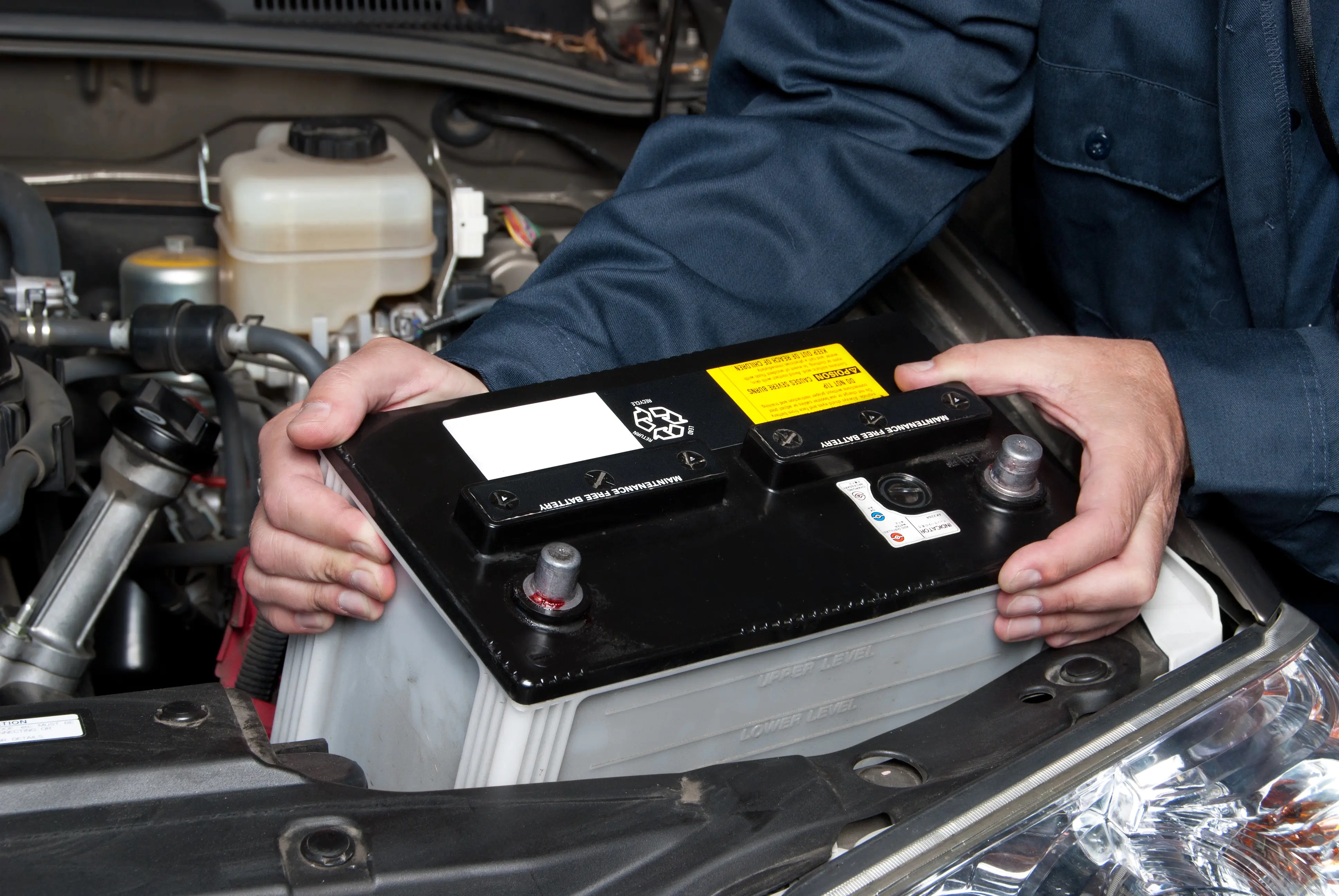Question: How do you fix low voltage on a car battery?
Answer: To fix low voltage on a car battery, you’ll need to charge or replace the battery.
As long as the battery is not completely dead, you can use a smart charger, trickle charger or battery maintainer to charge your battery in anywhere from a few hours to a few days. If you’re looking for a quicker fix, you can jumpstart your car, then use your alternator to charge the battery as you drive. This will charge your battery in about 30 minutes.
If the battery’s charge is below 11.80 volts on a multimeter, it’s too low to recharge and will need to be replaced.
How to charge a car battery
Let’s walk through how to connect your battery charger, what settings to use, and some other important tips.
- Find a safe spot: Make sure you’re outdoors or in a well-ventilated area. Safety first—take off any jewelry, put on gloves and safety glasses.
- Protect your car’s memory: While it is not needed, it is helpful to connect a backup battery to the On-board Diagnostics II (OBD-II) port. Your car’s computers need constant power, and losing it can cause issues like erratic idling.
- Disconnect the negative terminal: Usually, it’s the black one. Wrap a rag or glove around the terminal to prevent it from touching any metal. This helps protect your car’s electronics from the charging voltage.
- Connect the charger: Attach the charger to your car battery terminals—positive to positive and negative to negative. Be careful not to touch the charger’s terminals to the negative terminal you just disconnected.
- Set up the charger: Plug in your battery charger. Follow any specific instructions, such as voltage settings or battery type. Set the voltage to 12 volts and select “flooded” or “wet” for the battery type. If you’re using a smart charger, it may automatically detect the voltage and battery type.
- Start charging: Turn on the charger and wait. Depending on your charger, it could take 4-8 hours to charge the battery enough to start the car a few times. To fully charge the battery, it may take 10-24 hours.
- Finish up: Once charging is complete, disconnect the charger. A fully charged battery should read 12.88 volts with the engine off. Your charger’s indicator light will signal when it’s done. Again, avoid letting the charger touch the loose negative clamp.
- Reconnect the battery: Reattach the car’s negative terminal to the battery, then disconnect the backup battery.
Now you’re ready to hit the road with a fully charged battery!
Battery maintenance tips
Now that your battery is charged and ready to go, it’s important to keep it in good condition to avoid future issues. Here are a few tips to help you maintain your car battery and extend its life:
- Regularly check battery terminals: Over time, corrosion can build up on your battery terminals, which can interfere with the connection. Inspect the terminals every few months and clean off any corrosion with a mixture of baking soda and water. Use a wire brush to scrub the terminals clean, then rinse with water and dry thoroughly.
- Test your battery voltage: It’s a good idea to periodically test your battery’s voltage to make sure it’s holding a charge. You can use a multimeter to do this. A healthy battery should read around 12.70 to 12.88 volts when the engine is off. If the voltage is lower, your battery might be weakening and could need replacing soon.
- Avoid short trips: Frequently driving short distances can prevent your battery from fully charging, especially if your car’s electrical systems are heavily used. Try to drive your car for longer periods occasionally to give the alternator enough time to fully recharge the battery.
- Keep your battery secure: Make sure your battery is properly secured in its tray to prevent vibrations, which can cause internal damage and reduce its lifespan. Periodically check that the hold-down clamps are tight and that the battery isn’t moving around.
- Limit power usage when the engine is off: Leaving lights, radios, or other electronics on when the engine is off can drain your battery. If you’re going to be parked for a while, turn off all unnecessary electronics to preserve your battery’s charge.

Sarah Gray is an insurance writer with nearly a decade of experience in publishing and writing. Sarah specializes in writing articles that educate car owners and buyers on the full scope of car ownership—from shopping for and buying a new car to scrapping one that’s breathed its last and everything in between. Sarah has authored over 1,500 articles for Jerry on topics ranging from first-time buyer programs to how to get a salvage title for a totaled car. Prior to Jerry, Sarah was a full-time professor of English literature and composition with multiple academic writing publications.

Chris Burkhardt is a writer and editor with over a decade of experience across various storytelling mediums. With Jerry, Chris hopes to help anyone with a question about their vehicle easily find the answers they are looking for. Whether you need to know how much insurance costs for a classic car, how to replace a broken light or tell if you need an oil change, Chris wants to help you find solutions the best he can. Prior to joining Jerry, Chris was a digital content producer and writer for NBC and a freelance editor for NerdWallet. A graduate of the University of Oregon’s School of Journalism and Communication, if Chris is not working on content, he’s sure to be found cheering on his Ducks!








